Golf Ball Positions For Every Club (With Chart)
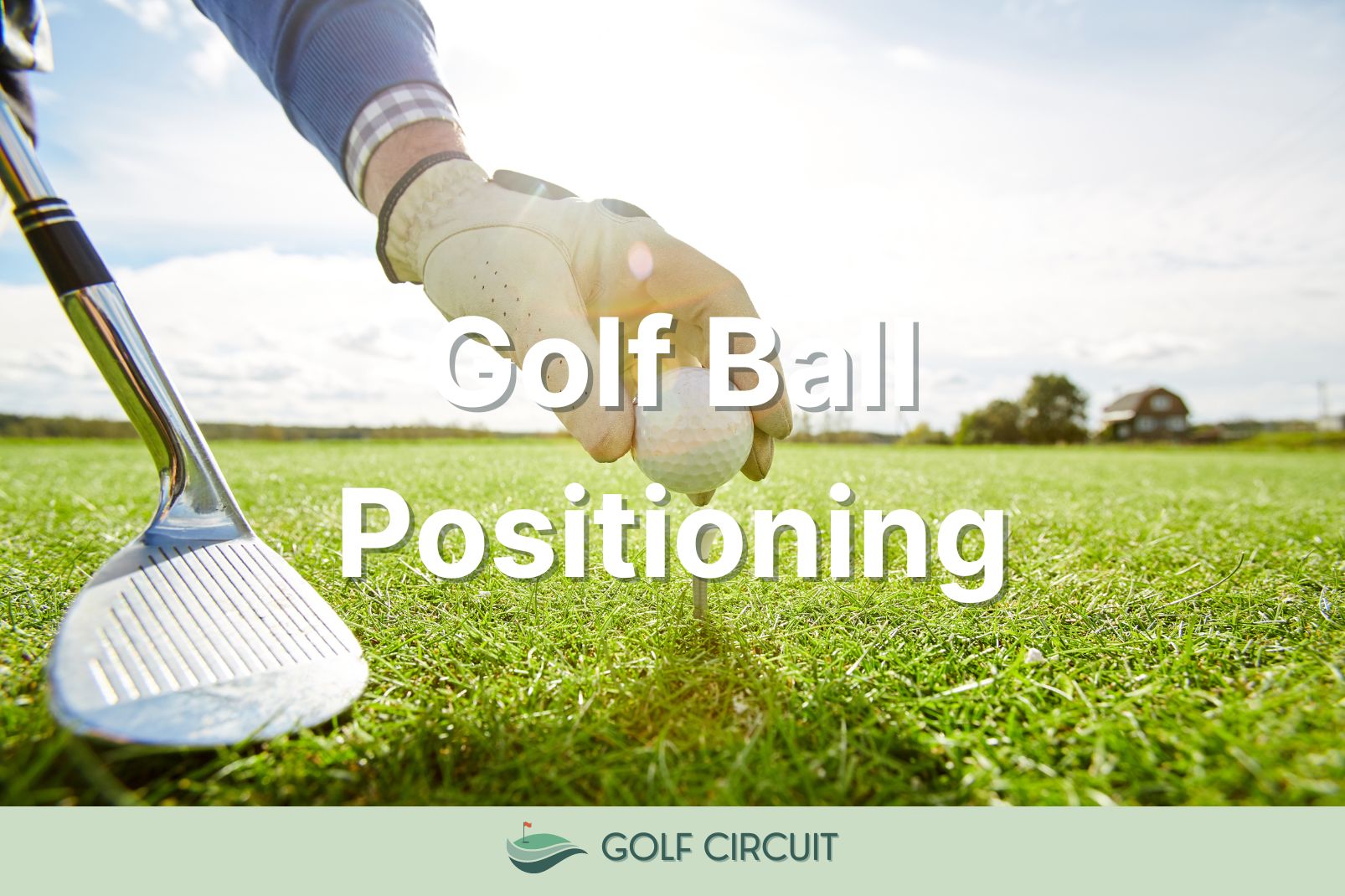
This is our guide for golf ball positions for every club.
In general, successful golf is about repeating mechanics again and again. Golfers strive to get each part of their body doing the correct thing to contribute to an efficient swing.
They hit the range for thousands of repetitions until their swing is consistent. However where they line up to position the ball between their legs will change dramatically, according to the club. With the proper ball/feet position you will be able to put the proper loft on the ball.
Below is a chart to figure out exactly where the golf ball position should be for every club.
| Club | Golf Ball Positions |
|---|---|
| Driver | Inside of Your Front Foot |
| #3 Wood | One to two ball widths forward of centerline. |
| #4 Wood | One to two ball widths forward of centerline. |
| #5 Wood | One to two ball widths forward of centerline. |
| #6 Iron | Just in front of the centerline. |
| #7 Iron | Just in front of the centerline. |
| #8 Iron | Half a ball widths in front of the centerline. |
| Wedges | Half a golf ball width behind the centerline. |
| Chipping Wedge (High Shot) | For high-angle shots, keep the ball position close to the front foot. |
| Chipping Wedge (Low Shot) | For low-angle shots, closer to the back foot. |
| Putter | On the centerline. |
Don’t overlook this critical knowledge.
Not every search result for the proper position of a golfer’s feet in relation to the ball and selected club will agree with the above information.
There are different schools of thought when it comes to ball positioning within the stance, including some opinions that differ greatly from what has been taught by golf instructors for decades.
Our approach has a long track record of producing success on the golf course at every skill level. Approaches that differ slightly have merit, and it’s up to each golfer to experiment, learn, and make slight adjustments. Nevertheless, the ball should truly always be within the stance.
We recommend working with a coach to make this information work perfectly with your game.
Golf Ball Positions for Drivers, Woods, Irons, and Wedges
With higher-lofted clubs, you’ll position the ball toward the center of your stance, working your way forward and to your left heel, if you’re driving with a right-handed grip.
The majority of the forward edging in your stance occurs within a few ball widths of the centerline, with only the driver taking a larger leap forward.
Several training devices assist you with learning the basics of the ball set up for each shot and club in the bag.
Golf Ball Positions for the Driver
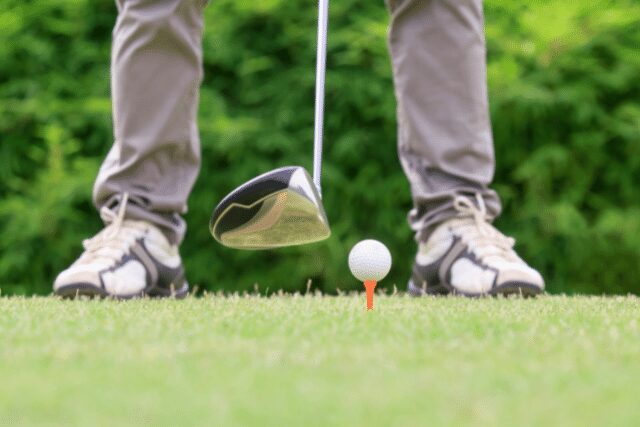
We’ll start with the big hitter and the club for which the ball should be most forward in the stance — the driver.
A trip to any golf course will show you that many struggling golfers place the ball at or past their front foot — especially when hitting the driver off the tee.
This technique compensates for other problems in the swing and doesn’t reflect correct positioning.
With that in mind, the ball should be up near the front foot when hitting the driver. It should be well past halfway and nearly all the way inside the leading foot.
Unlike most other clubs, the driver should be sweeping up when it makes contact with the ball. It will have reached the ground and just started its way back up when contact is made.
Golf Ball Positions for Woods and Hybrids
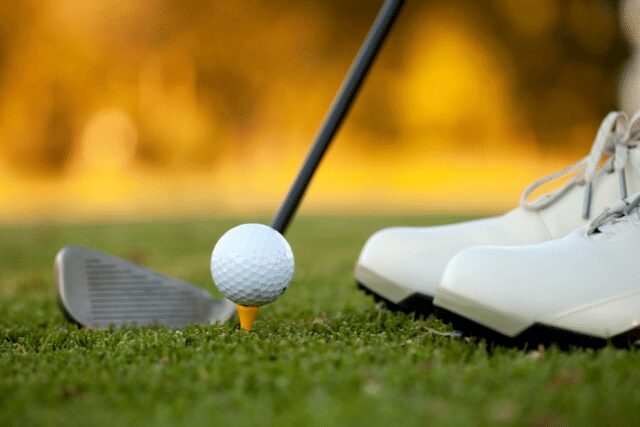
The mentality with woods and hybrids (particularly low hybrids, such as a 2H or 3H) should be similar to that with the driver.
The golf ball should be far forward in the stance, and you should make contact after the swing has made the transition from down to up.
While golf ball positions for woods and hybrids shouldn’t match the drive exactly, they should be within a couple of inches back.
Again, as the club loft increases and the number rises, the golf ball would go farther back. For example: the position for a 2-wood should be an inch behind the front foot, while a 3-hybrid or 5-wood might be an inch or two behind that.
Golf Ball Positions for Irons
Generally, the ball goes farther back in the stance as you change your club from driver to woods to irons.
However, we will begin the iron discussion by saying that a common agreed-upon philosophy is that the golf ball position for irons revolves around the 7-iron.
Why? Many golf instructors teach that the placement of the golf ball for the 7-iron should be directly in the middle of the stance — right between your legs.
For golfers who have the same stance for every club, the 7-iron is designed with the appropriate length and loft to have the ball in the center of the feet.
From there, the golf ball position for irons follows a similar placement pattern as it does for woods and hybrids. The 6-iron on up goes more toward the front foot, while the 8-iron on down goes more toward the back.
However, since the 7-iron is in the exact middle of the stance, the golf ball placement for the 8-iron and 9-iron won’t get all the way to the back foot. It would be best if you only placed the ball a couple of inches behind the center point.
Remember, the key is the loft of the club. Clubs designed for more loft should be hit farther back in the stance, ensuring that the player hits down on the ball.
Low irons, such as a 4-iron, are closer to a wood when it comes to swing action, and the ball should feel more like it’s picked off the ground than hit into the ground, as is the case with a 9-iron.
Golf Ball Positions for Wedges
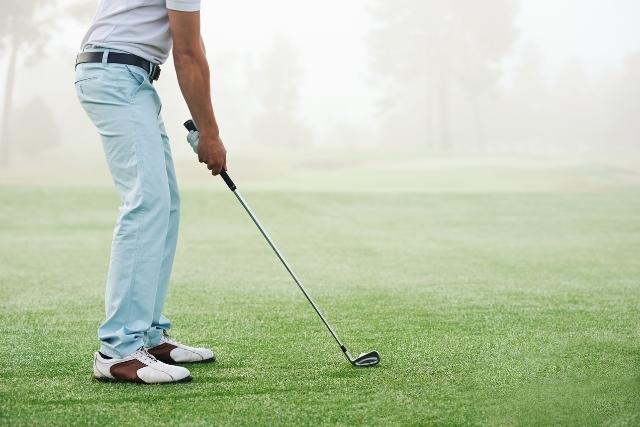
For wedges, golf ball positions should be the furthest back, approaching between half and two-thirds of the way back in the stance.
While an exact position is debatable and no sure-fire answer has been established for any club, generally, all golf instructors agree that wedges should be placed and hit farther back in the stance than anything else.
The purpose of wedges is to loft the ball in the air. Wedges are designed to do just that when the golfer makes a swing, essentially digging the ball out of the ground. For that reason, you will see skilled golfers take more of a divot with their wedges than with other clubs.
The least-lofted wedge is the pitching wedge, so it should be the furthest forward in the stance of the wedges. Then comes the gap wedge, which should have the ball positioned farther back.
A sand wedge is the second most lofted club. In the FAQs learn more about positioning for hitting the ball out of the sand.
A lob wedge is the highest-lofted club at nearly 60 degrees, and you should place the ball the furthest back with this club.
Ball Positioning for Putting
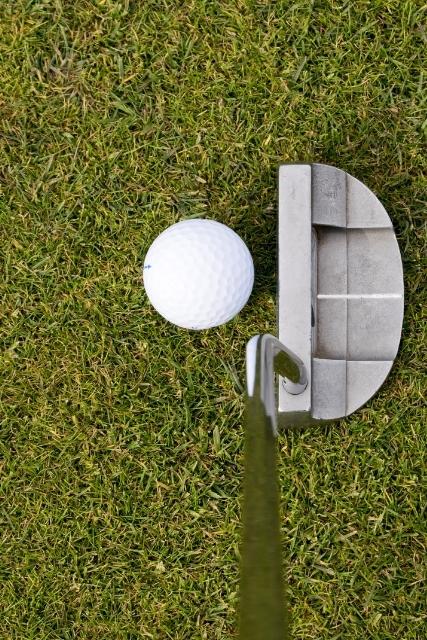
As with the other clubs, when using a putter, there are many opinions about where the ball should be placed in the stance.
The answer depends a bit on what the stance on the green looks like. However, a generally agreed-upon rule is that the golf ball should be just in front of the center of the stance. This positioning allows for the most topspin.
The ball should not be too far forward in the stance and not behind the center of the stance either. You want a stance that can consistently lead to making contact when the putter is perfectly flat on the ground.
These are general guidelines depending on the club you’re using for correctly positioning yourself around your ball.
As always, consistency is key.
Tips for Stance and How It Relates to Ball Positioning and Your Shot
Your stance and ball positioning go hand in hand for creating magnificent shots.
Follow these tips to adjust your positioning and stance to overcome beginner players’ common challenges.
The Mechanics and Results of Placing the Ball Too Far Forward in Your Stance
Placing the ball too far forward from the centerline in your stance means that you’re going to have a hard time making consistent, solid contact with the ball.
Forward placement of the ball increases the angle of attack, and if you don’t time your shot correctly, you’re going to end up with thin or fat strikes.
As a result, you’ll find it difficult to create enough shaft-lean for optimal control and compression of the shot.
Beginners need to understand that correct ball positioning in your shot relates to your swing arc and the outcome of the ball flight.
A thin shot occurs when your swing arc reaches the bottom point too early. As a result, you start taking an upward angle of attack on the ball, leading to those dreaded “topped shots.”
Depending on the club, you might end up clipping the ball without contacting the turf, resulting in a low-angle shot or a shot that runs along the fairway.
If you’re battling this clipping issue, shift the ball slightly to the rear. This re-positioning should be adequate to sync the contact point with the lowest point in your swing arc. As a result, you get better compression from covering the ball.
If the ball is too far forward from the centerline of your stance, you’ll find that you reach for it when resting the club behind the ball. This strategy opens your stance, creating an out-to-inside swing path when contacting the ball resulting in a curving shot moving from left-to-right, also known as a “slice” or “fade” with right-handed golfers.
You’ll find that this setup creates the low-angle flight of the ball with your shot.
What Golf Ball Positions Cause Me to Slice the Ball?
There’s nothing more frustrating than slicing or hooking a shot. Sure, there are times when a well-executed hook shot can benefit you from getting out of the rough, but in general, it’s a nightmare for beginners.
The reality is that the golf ball positioning creates a huge impact on the ball flight.
Forward positioning of the ball with the centerline results in a slice. Positioning it too far to the rear of the centerline results in a draw.
The problem with the forward placement of the ball in relation to your stance is that many beginners place the ball too close to their left heel when setting up.
This stance and positioning result in your opening your shoulders during the swing, creating an out-to-inward swing path.
This swing path can cause problems with the shot, creating sidespin on the ball as the club makes contact.
As a result, you end up with a slicing flight on the ball, moving from left to right.
If you take your shot with the ball positioned too far to the rear of the centerline, it results in the opposite result.
In this instance, your shoulders close, creating an inward-to-outward swing path for the clubhead, delofting the clubface, resulting in a low flight path.
The club path imparts sidespin, resulting in a shot that moves from right to left.
An even more extreme version of this type of hook in which the ball not only flies with a big right-to-left curve but never really gains much height, is referred to as a “duck hook” shot, one of the most unforgiving shots in the game.
Can My Stance Cause Me To Top the Golf Ball?
The swing arc is usually why beginner players end up topping the ball. Changing the ball’s position to the centerline is the easiest way to fix the problem.
In most cases, the problem is caused by the ball positioning, not by swing errors such as early extension or swaying.
If your swing ends up bottoming out too early before contacting the ball, bring the ball back farther in your stance and make the same swing. You’ll find that the contact is better, and you get a better shot.
Topping the ball can also be due to an incorrect head position as you draw down on the swing.
Final Thoughts
Golf is an unforgiving sport, but boy do we love it.
Spending a day at the range gives you a whole new appreciation for the pros and how they manage such consistently perfect technique.
As a beginner, the primary aspect of the game you need to focus on is your stance and ball positioning – the things you can control.
The correct placement and setup of the ball is a matter of experience and practice.
If you’re struggling, hire a golf pro to correct your stance. The last thing you want to do is engrain bad habits that could take years to change.
Golf Ball Positions FAQs
Where should the ball be placed if it is on a slope?
Uphill: If you can imagine taking a swing on a drastic uphill slope, you can picture hitting into the slope before making contact with the ball.
For that reason, it is generally taught to have the ball be a bit farther forward in the stance so that when contact is made, the swing is going more up with the slope.
Downhill: As expected, the remedy is the opposite of an uphill lie. The ball should go back a bit farther in the stance. In both uphill and downhill cases, the adjustment will depend on the severity of the slope, but shouldn’t be too drastic.
Where should the ball be positioned in your stance when in the bunker?

Bunker shots are tricky and don’t follow conventional rules of other types of shots.
Golfers use wedges out of the bunker, preferably a sand wedge, if you have one in your bag.
This club has tons of loft. Shouldn’t it be placed toward the back of the stance? No.
When playing out of a bunker, the golfer should get in position to have the ball in line with the front armpit. The shot needs to enter the sand first and then use the sand for popping the ball in the air.
If the ball is farther back in the stance, various bad consequences could follow. One of the most common consequences is not taking enough sand and digging the ball farther into the bunker or simply hitting it along the surface, so it doesn’t exit.
What are the signs that my ball positioning is incorrect?
There are many consequences of not having the ball positioned correctly in the stance, but one of the biggest is simply not having the right power or action on shots.
If you’re hitting the ball into the ground with your driver or popping it into the air and not achieving the distance you should, the problem could be the positioning of the ball. Experiment with this at the range to see differences in results.
How are alignment sticks used to perfect golf ball positions?
The most common use of alignment sticks ensures that a golfer’s feet are parallel to the intended target.
Many golfers use them both to align with the target and to work on their swing path. However, using a pair of alignment sticks can also help golfers make sure they are positioning themselves consistently for each club.
A golfer can place one stick parallel to the feet and make the center point of each toe tip to know where their feet should go in relation to the stick.
Then, using the guidelines above, the golfer can mark the stick for each golf club showing where the ball should be in the stance.
A second stick can cross the first one perpendicularly, pointing toward the golf ball.
With this setup, golfers can ensure that every practice shot they are hitting with each club has the ball positioned in the same place. This is extremely important and invaluable practice for producing consistent results.
Instead of changing the golf ball position, can’t the golfer simply change the stance?
There are lots of differing opinions regarding the golf shot. One opinion is that golf ball positions shouldn’t change. What should change is the width of the golfer’s stance.
Adjusting the stance, it is believed, can make the same adjustments that moving the position of the ball can.
The stance is one of the first things that a golfer should establish as a foundation for their game. The logic is not incorrect in how changing the stance can accommodate different clubs being used. However, we advise against it.
Every golfer should have a repeatable, comfortable stance. Adjusting the golf ball’s position in the stance is a less intrusive way to use each club properly. This is why teaching golfers to adjust the position of the golf ball within their stance is so popular.
Similarly, we advise against taking an alternative approach to normal club length graduation to adjust for hitting different shots.
There’s a reason that a standard has been established and is used almost across the board by professional golfers.


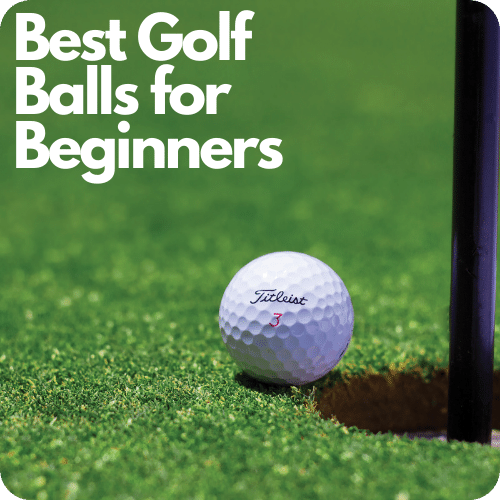
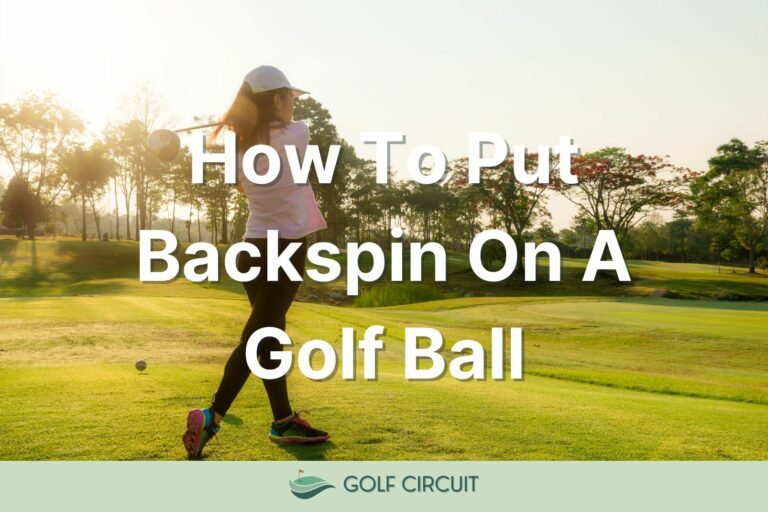
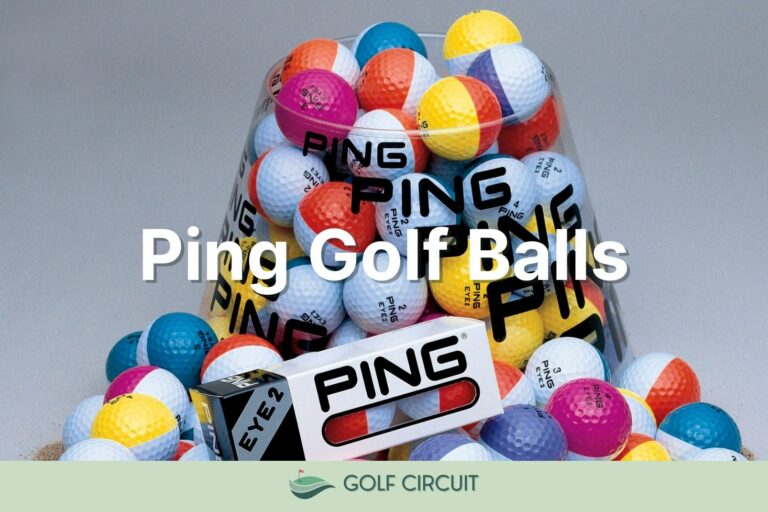
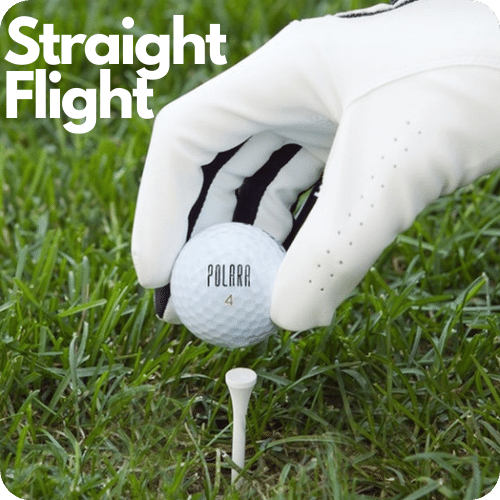

I found this information valuable and I hope that I will be able to place my ball better than I have in the past.
Thank you
This information is really helpful i will start putting it to good use at the range ty